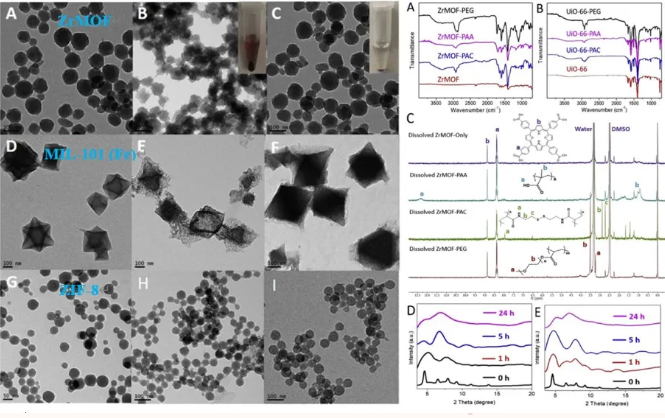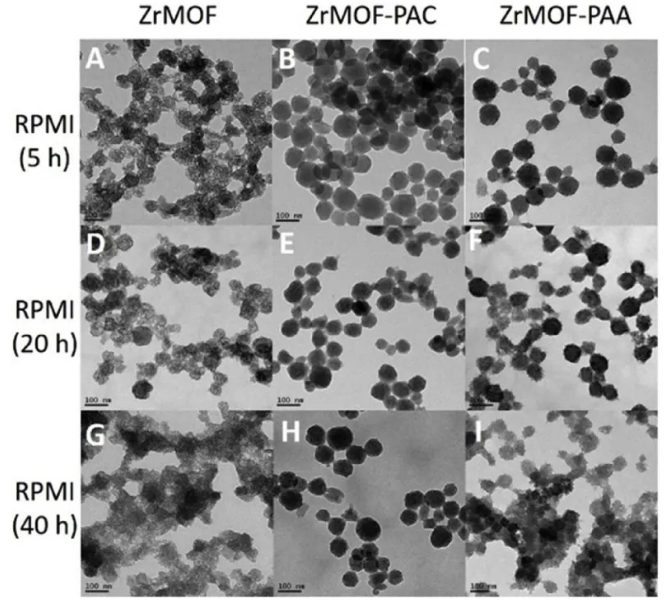
hotline:
17715390137
Tel/Wechat:
18101240246 (Technology)
0512-68565571
Email:mxenes@163.com (Sales Engineer)bkxc.bonnie@gmail.com
Scan the code to follow or search the official account on WeChat:
2D Materials Fronrier After paying attention,
click on the lower right corner to contact us,
Enter enterprise WeChat.
Professional Services Online

已传文件:photo/1601175022.png
Article introduction:
MOFs have the advantages of structural controllability, porosity adjustable, and easy functional modification, making them a good carrier for nanomedicine, but their physiological stability is poor, which severely limits their application in biomedicine. Zinc-based MOFs have poor stability in water, especially in acidic water buffers. Pickaxe-based MOFs are very sensitive to phosphate-containing buffers, such as phosphate buffered saline (PBS) and RPMI-1640 medium, both of which have a higher phosphate ion concentration. This sensitivity is due to Zr ions and guest There is a strong binding affinity between phosphate ions. The metal-free COFs have strong stability but poor biocompatibility and are not suitable for biochemical research.
In order to promote the biological application of MOFs, the functionalization of the outer surface of MOFs nanoparticles has been achieved through coordinated binding on unsaturated metal sites, covalent binding with pre-functionalized linkers, and ligand exchange. Although the functionalization of the outer surface has been successful, so far there are only a few easy-to-operate and generalizable intracellular drug release systems that are responsive to stimulation. Although phosphate ions can trigger the decomposition of many Zr-based MOFs, phosphate-responsive drug delivery systems using uniformly porous MOFs nanoparticles as a carrier have not been reported because physiological phosphate ions cannot control the decomposition of MOFs. Especially in the internal environment. Therefore, Zhantong Wang et al. designed a ZrMOF with high physiological stability and strong phosphate stimulation response function to make MOFs further in biomedical applications.
The novel MOFs nanoparticle in-situ polymerization strategy, that is, to wrap the nanoparticles with functionalized polymers, not only provides intrinsic stability for the wrapped nanoparticles, but also provides a stimulus-responsive decomposition mechanism for the nanoparticles. In order to wrap the functional polymers of different monomers on the surface of MOF nanoparticles, the author first fixed BMAP on the surface of MOFs, and then introduced free radical initiator AIBN to initiate polymerization on BMAP to form a surface coating, thereby preparing different polymers Protected MOFs.





| Reminder: Beijing Beike New Material Technology Co., Ltd. supplies products only for scientific research, not for humans |
| All rights reserved © 2019 beijing beike new material Technology Co., Ltd 京ICP备16054715-2号 |